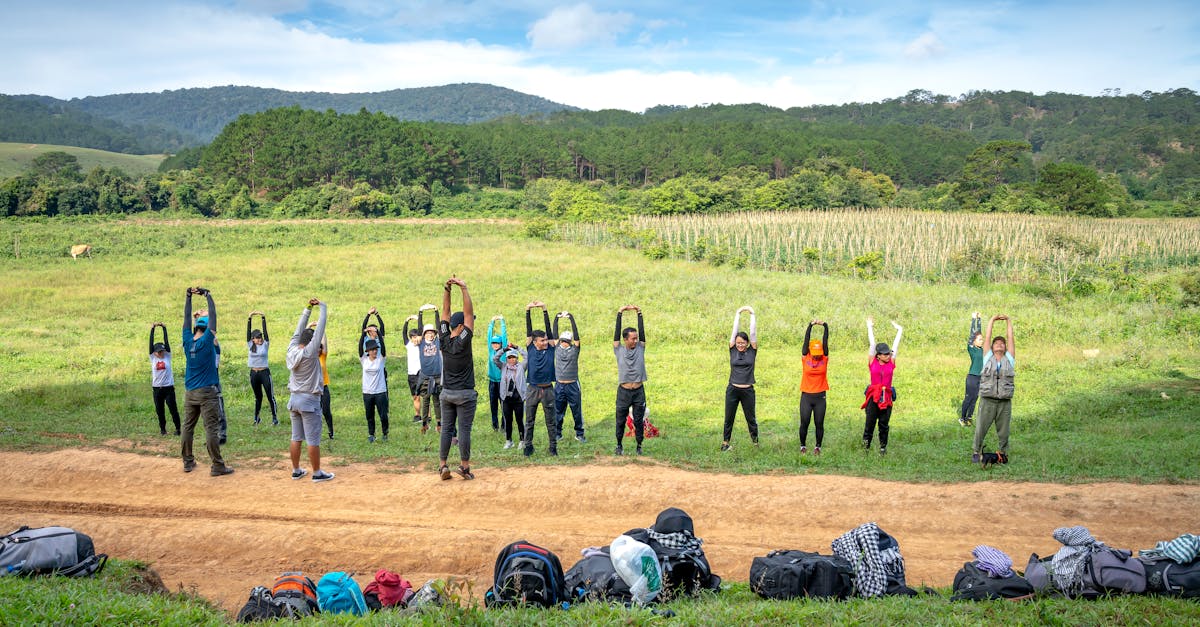Looking to make your next park visit more eco-friendly? We’ve got you covered with essential tips to help you enjoy nature while minimizing your impact on the environment.
From simple practices to sustainable choices, our guide will show you how to make a positive difference during your outdoor adventures.
Let’s explore how small changes in our behavior can lead to significant benefits for the planet and future generations.
Join us as we begin on a journey towards responsible and sustainable park exploration.
Key Takeaways
- Choose sustainable transportation options like walking, biking, or public transport to reduce carbon emissions and preserve the park’s beauty.
- Pack reusable items such as water bottles and utensils to minimize waste and environmental impact during your park visit.
- Respect wildlife and stay on designated trails to protect sensitive ecosystems and preserve the park’s flora and fauna.
- Dispose of waste properly in designated bins and recycle when possible to keep the park clean and beautiful for all visitors.
- Support eco-friendly parks with sustainable practices and conservation efforts to contribute to preserving natural wonders for future generations.

Choose sustainable transportation options
When planning our park visit, opting for sustainable transportation methods is key. Walking, biking, or using public transportation are excellent choices that reduce carbon emissions. Carpooling with friends or family is another great way to decrease our environmental impact. By selecting these eco-friendly options, we can help preserve the park’s beauty and reduce air pollution.
Consider using electric vehicles if available, as they produce zero tailpipe emissions. Some parks even offer shuttle services for visitors. Taking advantage of these services not only benefits the environment but also enhances our overall park experience. Let’s make conscious decisions about how we travel to the park to minimize our carbon footprint.
Pack reusable items and avoid single-use plastics
When preparing for a park visit, pack reusable items such as water bottles, utensils, and containers. This helps reduce waste and environmental impact. By avoiding single-use plastics like bottles and bags, we can contribute to preserving the park’s natural beauty and wildlife.
Choose durable and reusable alternatives that can be used multiple times. These items not only benefit the environment but also make our park experience more convenient and enjoyable. Let’s all do our part in protecting our parks by being mindful of the products we bring along.
Consider investing in quality reusable items that will last for numerous outings. Together, we can make a positive impact on the environment with these simple yet effective steps.
For more tips on reducing single-use plastics, visit National Geographic’s guide for additional insights and ideas on becoming more eco-friendly during park visits.

Respect wildlife and stay on designated trails
When exploring parks, it’s crucial to respect wildlife and stick to designated trails. Venturing off the paths can harm sensitive ecosystems and disturb animals’ natural habitats. By following posted guidelines and staying on marked trails, we help protect the park’s flora and fauna.
To preserve the beauty of the park and ensure the safety of both visitors and wildlife, it’s essential to keep a safe distance from animals. Avoid feeding or approaching wild animals as it can alter their natural behavior and create potential risks.
Remember, wildlife photography is best done from a distance using zoom lenses to capture stunning shots without causing any harm. By respecting wildlife and staying on designated trails, we can enjoy the park’s beauty while safeguarding its inhabitants.
For more tips on wildlife conservation and responsible park behavior, check out the National Park Service’s guidelines.
Dispose of waste properly and recycle when possible
Let’s keep our parks clean by disposing of waste in designated bins. Improper waste disposal can harm wildlife and pollute the environment. You can help by bringing a reusable water bottle to reduce plastic waste. Remember, recycling is key – look for recycling bins and separate your trash accordingly. By practicing these habits, we contribute to keeping our parks beautiful for everyone to enjoy.
Remember to check the park’s specific recycling guidelines to make sure you’re recycling correctly. For more tips on reducing waste during park visits, visit the National Park Service’s official website.
Let’s work together to keep our parks clean and protect the environment for future generations.

Support eco-friendly parks and initiatives
When choosing a park to visit, opt for eco-friendly parks with sustainable practices and conservation efforts.
Look for parks that promote recycling programs and educate visitors on environmental protection. Responsible park agencies often have initiatives such as wildlife conservation projects, clean-up events, and sustainable tourism practices.
We recommend checking the website of the National Park Service for information on parks’ eco-friendly efforts. They offer valuable resources on sustainability and ways to get involved in supporting conservation initiatives.
Remember, by supporting eco-friendly parks and initiatives, we can help preserve these natural wonders for future generations. Let’s all do our part in advocating for sustainable and responsible park visitation practices.

